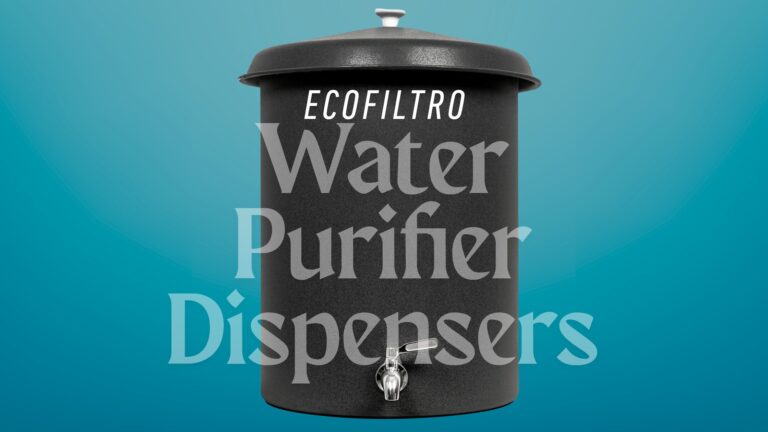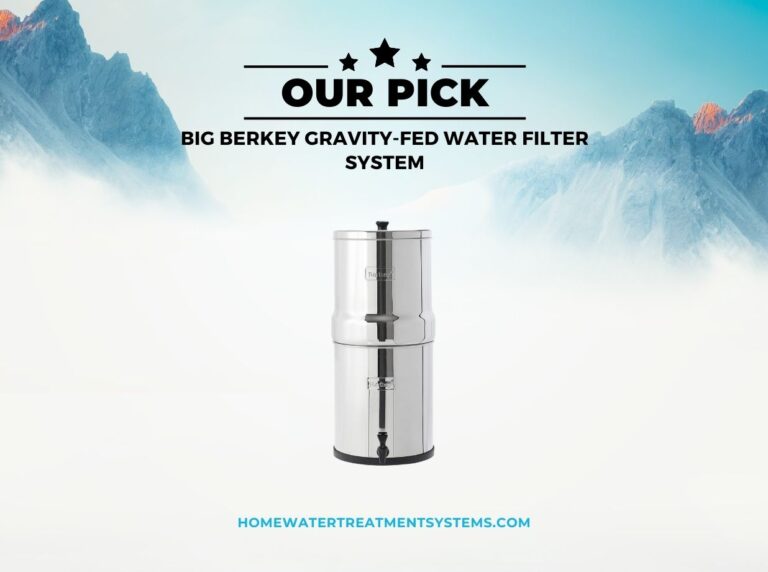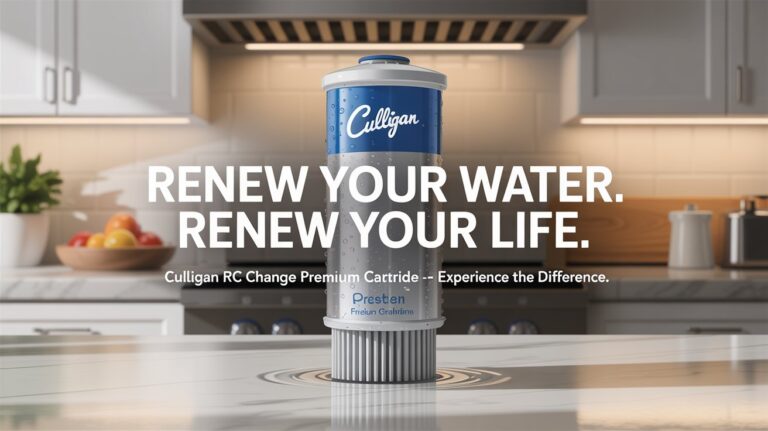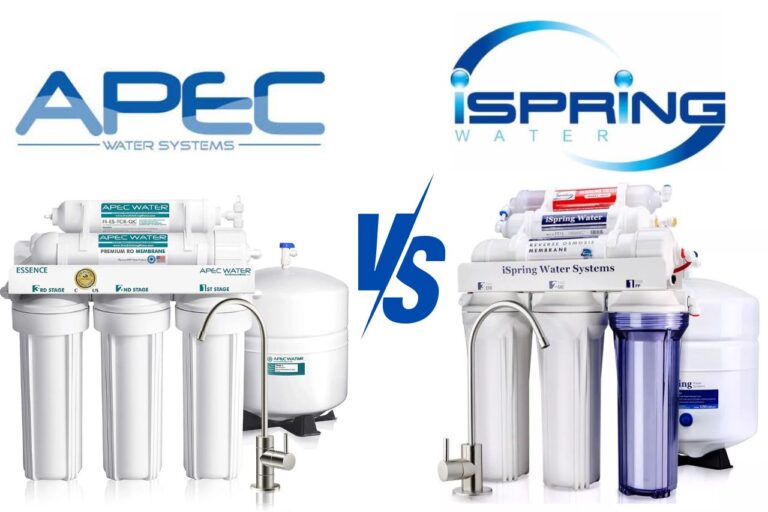Activated Carbon Filters vs. Ceramic Filters
When it comes to ensuring clean and safe drinking water, the right filtration system can make all the difference. Two popular choices are activated carbon filters and ceramic filters. But which one is right for you? This article dives into a detailed comparison of their filtration capabilities, costs, and practical applications to help you make an informed decision. Whether you’re a homeowner wanting to improve tap water quality or an outdoor enthusiast needing portable filtration, understanding the pros and cons of each type will guide your choice. Let’s explore what sets activated carbon and ceramic filters apart.
“Choosing the right water filter can significantly impact your health and well-being.”
Read on to discover which filter fits your needs better, ensuring you get the most value and effectiveness for your investment.
Understanding Activated Carbon Filters: How Do They Work?
Activated carbon filters excel in water purification through a process known as adsorption. During adsorption, organic compounds bond to the surface of the filter, effectively removing contaminants from the water. This method of filtration is highly efficient, making activated carbon filters a popular choice for many households.
There are several types of activated carbon filters available in the market, primarily categorized into Granular Activated Carbon (GAC) filters and Carbon Block filters. GAC filters contain loose granules of activated carbon, which allow for a more customizable flow rate and are often used in point-of-use filters. Carbon Block filters, on the other hand, are more densely packed, providing a higher filtration efficiency by trapping smaller particles.
The versatility of activated carbon filters extends to their sourcing materials. These filters are made from organic substances like wood, coal, bamboo, or coconut shells, all of which are subjected to high temperatures in an oxygen-deprived environment. This process turns them into a porous, charred form that is incredibly effective for trapping contaminants. Specifically, coconut shells are a favored source due to their dense micro-pores, offering superior adsorption capabilities.
One of the standout features of activated carbon filters is their ability to remove chlorine, improve taste, and eliminate foul odors from water. This makes them an excellent choice for treating municipal water supplies, which often contain residual chlorine used for disinfection. By using activated carbon filters, you can enjoy water that not only looks clean but also tastes and smells fresh.
Activated carbon filters are effective at removing bad odors and tastes
Understanding Ceramic Filters: How Do They Work?
These filters are typically composed of a ceramic outer shell, with an inner core that can be made from activated carbon or other filtering materials. As water flows through the ceramic’s tiny pores, it effectively screens out bacteria and sediment, making it a very efficient form of water purification. Their design mimics natural water filtration, much like the Earth’s own processes, ensuring a clean and safe drinking supply.
One of the standout features of ceramic filters is their reusability. The ceramic surface can often be cleaned and reused multiple times before it needs replacing, making it a cost-effective choice for long-term use. Additionally, they can be applied in a variety of settings—from under-sink installations to portable devices for outdoor adventures. This versatility means that whether you’re at home, in the wilderness, or on a camping trip, a ceramic filter can be your trusted companion for clean drinking water.
However, it’s important to note that while ceramic filters are excellent at removing bacteria and sediment, they may not be as effective for certain chemical contaminants, such as chlorine or heavy metals, unless they are combined with other filtration media like activated carbon.
Ceramic filters can remove 99.99% of bacteria and protozoa
Effectiveness: Activated Carbon vs. Ceramic Filters
When it comes to filtration effectiveness, both activated carbon and ceramic filters offer distinct advantages based on their construction and materials.
Activated Carbon Filters: These filters excel at removing organic chemicals, chlorine, unpleasant tastes, and odors. They can house GAC (Granular Activated Carbon) or Carbon Block, with the latter generally being more efficient due to a higher surface area for adsorption. However, their effectiveness can diminish over time as the activated carbon becomes saturated. Some units come NSF certified, indicating their capability to remove specific contaminants like lead or cysts, but their efficiency against heavy metals like copper and lead, and fluoride, is often partial.
Ceramic Filters: Built from highly porous ceramic materials, these filters are particularly effective at filtering out bacteria, sediment, and turbidity. They often include an internal core of activated carbon, enhancing their capability to remove chlorine, VOCs, and odors. More advanced ceramic filters may also incorporate an ion exchange resin, which helps capture heavy metals. Their robust structure ensures long-lasting performance, although they may require periodic cleaning to maintain optimal flow rates.
In summary, if your primary concern is improving the taste and removing chlorine or organic chemicals, activated carbon filters are your go-to. On the other hand, if you’re focused on eliminating bacteria and sediment or need added protection against a broader spectrum of contaminants, ceramic filters with an activated carbon core offer a more comprehensive solution.
Water is the driving force of all nature.
– Leonardo da Vinci
Upfront Costs and Value: Activated Carbon vs. Ceramic Filters
When weighing the upfront costs and the overall value of activated carbon filters versus ceramic filters, it’s essential to consider both the financial outlay and the longevity of the filters. Activated carbon filters typically come in a variety of formats, including granular activated carbon (GAC), carbon block filters, and radial carbon filters, with prices varying based on complexity and size. Generally, the initial cost of activated carbon filters can be lower, especially for basic GAC models. However, the cost can increase for higher-end variants and those certified to remove specific contaminants such as lead or cysts.
On the other hand, ceramic filters often come with a slightly higher upfront price tag. The primary cost component of ceramic filters is the ceramic material itself, which is designed to last for a longer period. A significant advantage of ceramic filters is their reusability; many ceramic filter cartridges can be cleaned and reused multiple times before needing a replacement. This reusability can significantly extend the life of the filter, offering excellent long-term value.
Considering the longer lifespan: Ceramic filters tend to provide better long-term value because of their durability and the savings on replacement costs. Yet, if you are primarily concerned with contaminant-specific filtration, particularly for issues like chlorine taste and odor, activated carbon filters might still offer a cost-effective solution, albeit with more frequent cartridge changes required.
Evaluating your needs: It’s crucial to align the choice of filter with your specific needs and usage habits. If you need a reliable filter for everyday water consumption and don’t mind the periodic expense of replacements, activated carbon filters are an efficient option. For those seeking a long-lasting, low-maintenance solution, particularly in areas with significant particulate contamination, ceramic filters present a strong case for investment.
| Attribute | Activated Carbon Filters | Ceramic Filters |
|---|---|---|
| Filtration Capabilities | Removes organic compounds, VOCs, THMs, pesticides, herbicides, chlorine, bad tastes and odors. | Removes bacteria, sediment, turbidity, chlorine (if combined with activated carbon), VOCs (if combined with activated carbon), and heavy metals (if combined with ion exchange resin). |
| Initial Cost | Moderate | Low |
| Maintenance | Requires periodic replacement. | Low maintenance, long-lasting. |
| Common Applications | Point-of-use drinking water, under-sink installations, and general household water treatment. | Point-of-use drinking water, under-sink installations, and portable filters for camping trips. |
Long-Term Maintenance Costs: Activated Carbon vs. Ceramic Filters
When considering the long-term maintenance costs of activated carbon and ceramic filters, it is important to look at both the frequency of replacing these filters and their durability. Let’s break down what you can expect with both types.
Activated Carbon Filters: These filters typically have a shorter lifespan compared to their ceramic counterparts. Generally, you will need to replace an activated carbon filter every 2 to 6 months, depending on water quality, usage, and filter type. Granular activated carbon (GAC) filters might need more frequent replacements, while carbon block filters tend to last a bit longer due to their denser structure. While the frequency of replacement might make maintenance seem daunting, the cost of individual replacement filters is relatively affordable, ranging between $20 to $50 on average. However, these costs can add up over time.
Ceramic Filters: On the other hand, ceramic filters are known for their durability and ease of maintenance. These filters can be cleaned and reused many times before needing a replacement, which can extend their life to several years. By regularly scrubbing the surface to remove accumulated contaminants, you can maintain filter efficiency without incurring frequent replacement costs. When it’s eventually time to replace a ceramic filter, the cost usually falls between $30 and $100, but this infrequency can make it a more cost-effective option in the long run.
In terms of long-term cost efficiency, ceramic filters often provide better value simply because of their reusable nature. However, it’s crucial to factor in your specific usage and water quality needs. If your primary concern is filtering out chlorine and volatile organic compounds (VOCs) effectively and you don’t mind more frequent replacements, activated carbon filters may be more suitable for you. On the other hand, if you prefer a low-maintenance, long-lasting solution, a ceramic filter could be the way to go.
| Feature | Activated Carbon Filters | Ceramic Filters |
|---|---|---|
| Contaminants Removed | Chlorine, Bad Tastes, Foul Odors, Sediment, Pesticides, Petrochemicals, VOCs, THMs | E. Coli, Shigella, Salmonella, Giardia, Cryptosporidium, Dirt, Debris, Rust, Turbidity, Chlorine, VOCs, Heavy Metals |
| Filter Lifespan | 3-6 months | 6-12 months (Can be cleaned and reused) |
| Upfront Cost | Low to moderate | Moderate to high |
| Maintenance | Requires frequent replacements | Low maintenance; needs occasional cleaning |
| Practical Applications | Point-of-use, under-sink, whole-house applications | Point-of-use, portable filters, under-sink |
Choosing the Right Filter for Your Home
When selecting the right filter for your home, consider your specific needs and circumstances. For instance, if you live in a small apartment or RV, a ceramic filter might be your best bet. These filters are not only compact but also versatile, making them easy to use in limited spaces. Additionally, they can serve as portable filtration devices for camping trips or emergencies.
On the other hand, if you’re looking to ensure comprehensive water treatment for a whole house, activated carbon filters are often the preferred choice. They can be integrated into point-of-entry (POE) or point-of-use (POU) systems, depending on your requirements. For those with heightened concerns about water quality, combining activated carbon filters with other filtration methods like reverse osmosis can provide an added layer of protection.
Consider also the maintenance and long-term costs associated with each type of filter. Activated carbon filters typically require more frequent replacement, which can add up over time. However, they are relatively easy to maintain and replace. In contrast, ceramic filters have a longer lifespan but may require a bit more effort to clean periodically to ensure optimal performance.
For those on the go or needing a reliable option during emergencies, Berkey filters, which often utilize ceramic elements, come highly recommended. They are durable, easy to transport, and effective at filtering various contaminants. This flexibility makes them an excellent choice for both home use and outdoor adventures.
Ultimately, choosing the right filter for your home involves evaluating your specific needs, space constraints, and budget. Both activated carbon and ceramic filters offer their own sets of advantages, so weigh these factors to make an informed decision that best suits your lifestyle.

Expert Opinions and Consumer Reviews
To dive deeper into the real-world performance of activated carbon and ceramic filters, we turned to both experts and everyday users. The consensus? Both filtration methods have their unique strengths and specific applications.
Experts Praise for Activated Carbon Filters: Experts often highlight the effectiveness of activated carbon filters in removing chlorine, bad tastes, and odors. “Activated carbon is unparalleled for its ability to improve the aesthetic qualities of water,” says Dr. Emily Watts, a water quality specialist. This makes them highly suited for urban homes where water often has a chlorine aftertaste.
Experts on Ceramic Filters:
Ceramic filters, on the other hand, garner expert praise for their ability to filter out bacteria and protozoa. “The pore size of ceramic filters is small enough to trap harmful microorganisms, making them ideal for situations where biological contaminants are a concern,” notes Dr. Robert Latham, an environmental engineer. They are often recommended for rural areas with compromised water sources.
Consumer Reviews: A user from New York mentions, “I installed an activated carbon filter in my kitchen, and the water tastes so much better now. No more chlorine smell!” Meanwhile, a camper from Colorado recounts, “Using a ceramic filter was a game-changer during our hiking trips. We could drink from natural sources without worries.”
Interestingly, the Berkey filters emerged frequently in reviews as a standout. Known for their durability and multifaceted filtration capabilities, they’re a favored choice among those seeking reliability in emergencies or travel. As one seasoned traveler puts it, “The Go Berkey is a lifesaver. It’s compact, and I trust it completely whether I’m abroad or out in the wilderness.”
Ultimately, the best filter for you depends on your specific needs. Whether it’s the superior taste enhancement of activated carbon or the robust microorganism filtration of ceramic, each has its place. Reading through expert opinions and user reviews can help you make an informed decision tailored to your lifestyle and water conditions.
Activated carbon filters typically last 2-6 months
Ceramic filters can last up to 12 months with proper maintenance
Conclusion
When it comes to choosing between activated carbon filters and ceramic filters, your decision ultimately hinges on your specific needs and priorities. Both types of filters offer unique benefits and have their own set of limitations. Activated carbon filters are excellent for removing organic compounds and improving water taste and odor, making them ideal for those who prioritize flavor and aesthetic quality. On the other hand, ceramic filters excel in eliminating bacteria and pathogens, which is crucial if you’re concerned about biological contaminants.
Consider the effectiveness of each filter type for your particular water source. Ask yourself: Are you more concerned about chemical pollutants, or is biological contamination a bigger issue? Additionally, evaluate the upfront costs and long-term maintenance associated with each filter. Activated carbon filters might have a lower initial cost but require more frequent replacements, whereas ceramic filters, although more fragile, tend to have a longer lifespan with proper care.
Maintenance practices also play a crucial role in your decision. Activated carbon filters need regular monitoring to ensure they haven’t become saturated, while ceramic filters require gentle handling and occasional cleaning to maintain flow rate and effectiveness.
Practical applications should also be considered. If you need a portable solution for hiking or traveling, a ceramic filter might be more suitable due to its ability to safely filter untreated water. Conversely, an activated carbon filter is often better suited for home use, particularly when connected to a municipal water supply.
Ultimately, there is no one-size-fits-all answer. Weigh the pros and cons of each, and consider seeking advice from experts or consumer reviews to guide your decision. By understanding your specific needs and the capabilities of each filter type, you can confidently choose the best filtration system for your home or adventures.







